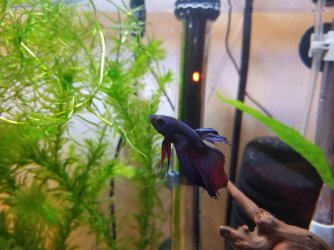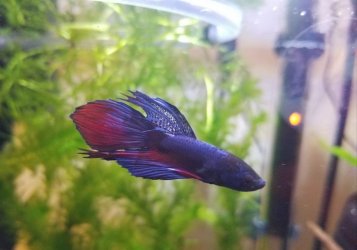Ok thanks, do you know an air pump that you can adjust?
Most air pumps have a small screw on the outside of the case. It is attached to the air chamber inside the pump. If you loosen the screw a small amount it will reduce the air pressure.
Otherwise get a plastic T-piece and tap from the pet shop and fit it into the airline and bleed some off, as suggested by Essjay.
------------------------
Has the fish got cream/ white patches on his face and eye?
If yes then he has a problem. It's either an external protozoan infection like Costia, Chilodonella or Trichodina, or it's a fungal infection.
Either try adding salt or get a broad spectrum fish medication that treats bacteria, fungus and protozoan infections and treat the tank.
Remove carbon from the filter before treating with medications. Carbon does not remove salt so can stay in the filter if you only use salt.
But try salt before chemicals. You can add rock salt (often sold as aquarium salt), sea salt or swimming pool salt to the aquarium at the dose rate of 2 heaped tablespoon per 20 litres of water.
If you only have livebearers (guppies, platies, swordtails, mollies), goldfish or rainbowfish in the tank you can double that dose rate, so you would add 4 heaped tablespoons per 20 litres.
Keep the salt level like this for at least 2 weeks but no longer than 4 weeks otherwise kidney damage can occur. Kidney damage is more likely to occur in fish from soft water (tetras, Corydoras, angelfish, gouramis, loaches) that are exposed to high levels of salt for an extended period of time, and is not an issue with livebearers, rainbowfish or other salt tolerant species.
The salt will not affect the beneficial filter bacteria but the higher dose rate will affect some plants. The lower dose rate will not affect plants.
After you use salt and the fish have recovered, you do a 10% water change each day for a week using only fresh water that has been dechlorinated. Then do a 20% water change each day for a week. Then you can do bigger water changes after that. This dilutes the salt out of the tank slowly so it doesn't harm the fish.
If you do water changes while using salt, you need to treat the new water with salt before adding it to the tank. This will keep the salt level stable in the tank and minimise stress on the fish.





